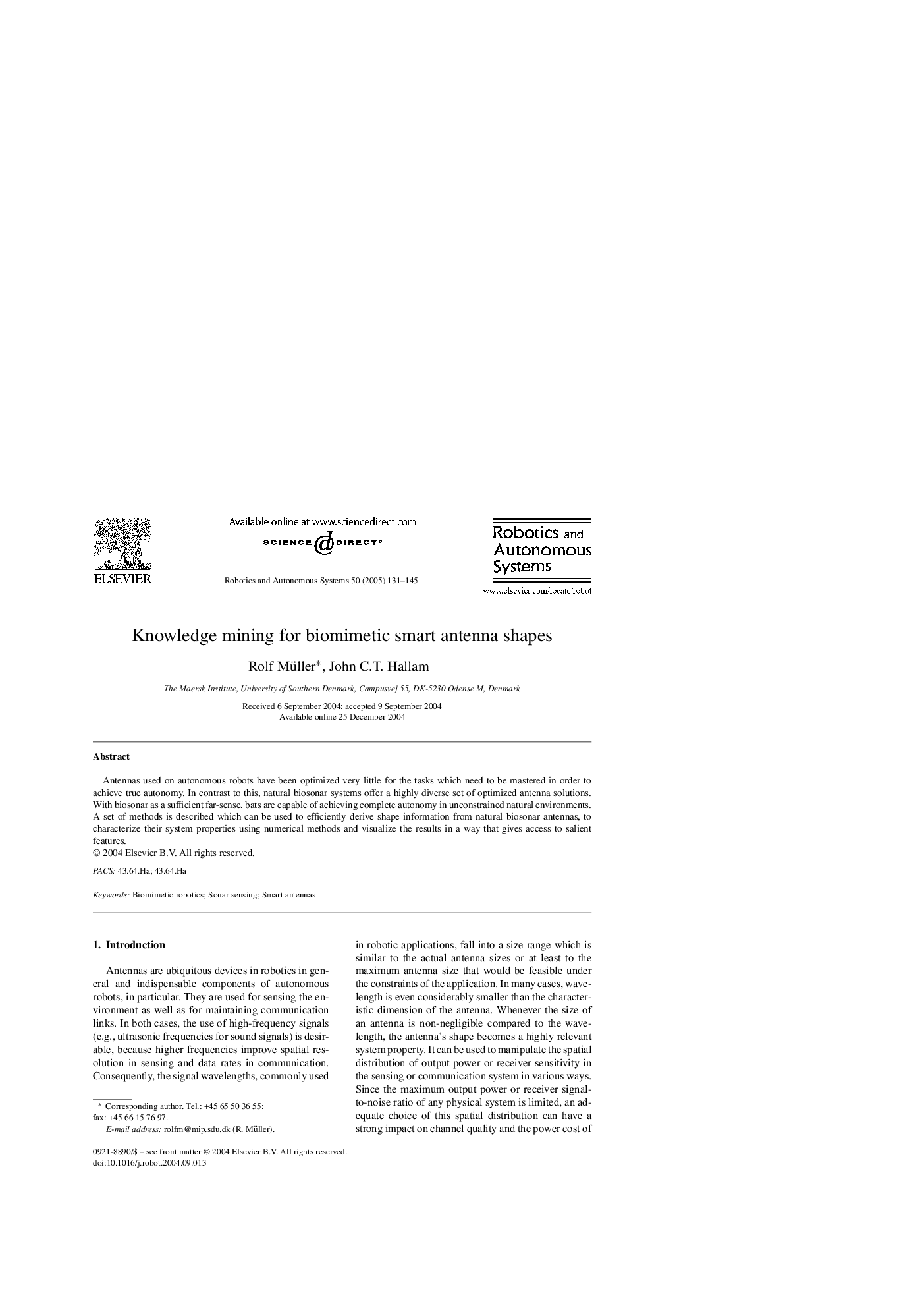| Article ID | Journal | Published Year | Pages | File Type |
|---|---|---|---|---|
| 9654561 | Robotics and Autonomous Systems | 2005 | 15 Pages |
Abstract
Antennas used on autonomous robots have been optimized very little for the tasks which need to be mastered in order to achieve true autonomy. In contrast to this, natural biosonar systems offer a highly diverse set of optimized antenna solutions. With biosonar as a sufficient far-sense, bats are capable of achieving complete autonomy in unconstrained natural environments. A set of methods is described which can be used to efficiently derive shape information from natural biosonar antennas, to characterize their system properties using numerical methods and visualize the results in a way that gives access to salient features.
Related Topics
Physical Sciences and Engineering
Computer Science
Artificial Intelligence
Authors
Rolf Müller, John C.T. Hallam,
